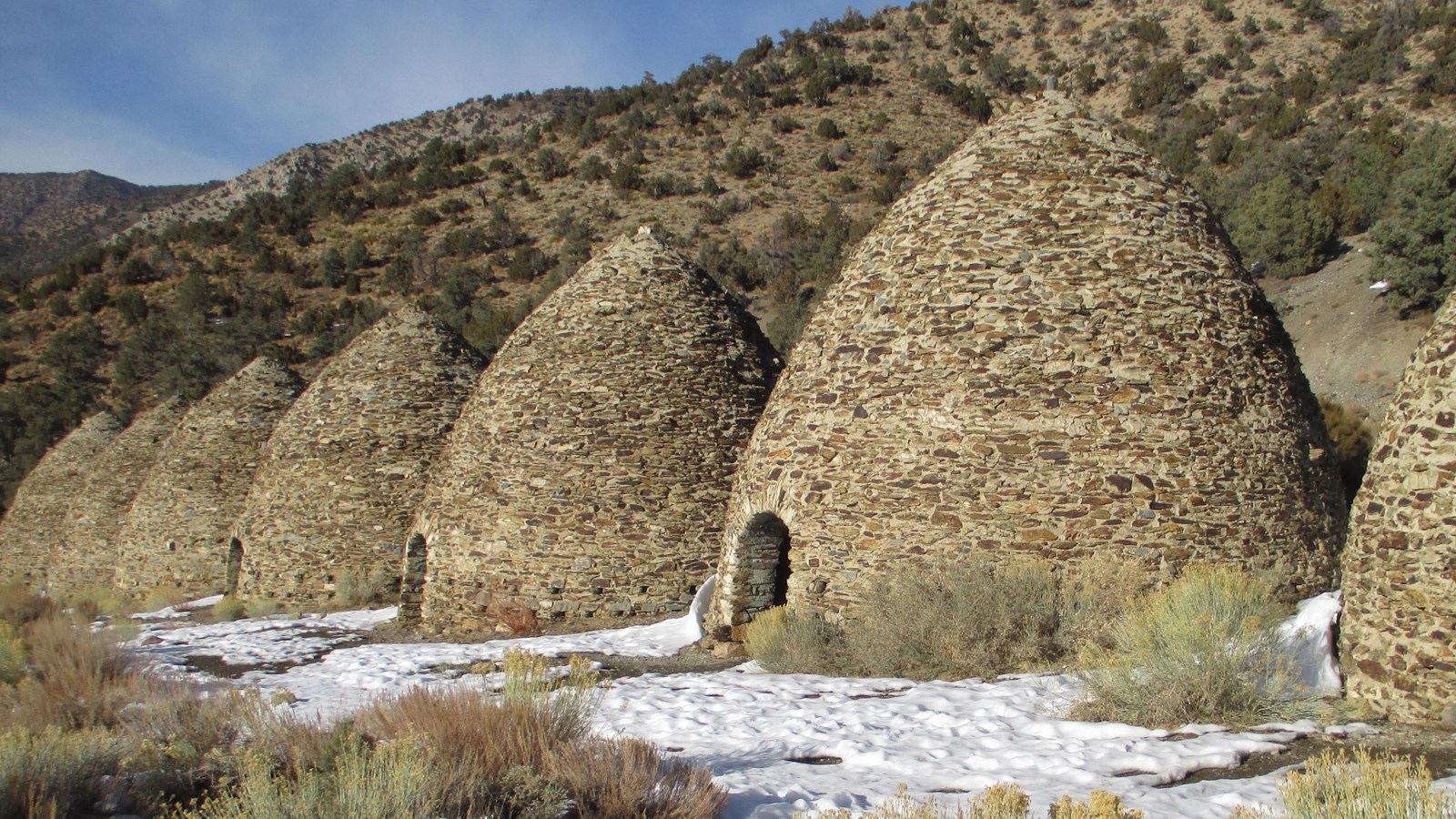Last updated: April 27, 2021
Place
Wildrose Charcoal Kilns

NPS/ E. Letterman
Quick Facts
Location:
Death Valley National Park
Significance:
Mining History
Amenities
6 listed
Historical/Interpretive Information/Exhibits, Parking - Auto, Scenic View/Photo Spot, Toilet - Vault/Composting, Trailhead, Trash/Litter Receptacles
“The Charcoal Kilns ought to be regarded as prime historic structures, perhaps the most significant structures in the Monument. The number of kilns- ten in all – is itself an attractive feature, especially since they are all laid out in a perfect line up in the canyon.”
This excerpt from a study published in 1969 by National Park Service Historian, Benjamin Levy, reveals that a trip off the beaten path, up Wildrose Canyon, is well worth the detour. Completed in 1877 to supply charcoal for the Modock Mines 25 miles to the west in the Argus Range, these kilns were likely only used until 1879.
The kilns were built from local stone, and the mortar is a lime, sand and gravel mix. During the kilns’ operation, wood was harvested from the surrounding hillsides, loaded into the kilns, and fired to produce charcoal. The charcoal product was then transported by pack animal, and possibly wagons to be used in smelters for lead-silver mines. Charcoal was the preferred fuel source for use in mining furnaces because it burns more slowly than wood, and produces a much greater heat, which is needed for refining ores.
Many of the trees used as fuel in the kilns were local Pinion Pines. Pinion pines are the source of pine nuts (think-pesto!), which were a traditional staple of the Timbisha Shoshone diet. The nuts ripen in the fall, and can be stored for several years, making them a valuable food source.
The best way to reach the Wildrose Charcoal Kilns is by taking the Emigrant Canyon Road turnoff of Highway 190 (minimum 1.5 hr detour). This paved road offers spectacular scenery, while winding through hills, valleys, and washes. Be alert for wild burros, whose ancestors were left behind during the mining days; these animals often stand in roadways and have been known to bite and kick when approached. The final 2 miles (3 km) is gravel, and although it is generally passable by most vehicles, check current conditions before making the trip.
